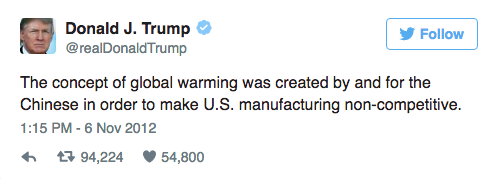Fact-checking the first presidential debate with tips on doing it yourself
September 27, 2016
September 26 marked the first presidential debate leading up to the election on November 8. Donald Trump and Hillary Clinton shared in the enthusiastic sparring of ideology, providing for great entertainment and a swamp of information to sort through. When things are so fast-paced and said with such conviction, it can be difficult to tell what is factual and what is exaggerated. In some instances, outright lies are told.
Claim by Donald Trump: Regarding Ford auto plants,“Thousands of jobs leaving Michigan, leaving Ohio, they’re all leaving.”
Fact: According to a report done by NPR, the unemployment rate in Michigan is 4.5%. Ohio’s unemployment rate is 4.7%. Both of these are lower than the national average of 4.9%. Mark Fields, CEO of Ford, said “‘Zero’ jobs will be lost in the U.S.”, and said “it is really unfortunate when politics get in the way of the facts.”
Claim by Hillary Clinton: “Donald thinks that climate change is a hoax perpetrated by the Chinese. I think it’s real.”
Fact: November 6, 2012, Donald Trump tweeted out, “The concept of global warming was created by and for the Chinese in order to make U.S. manufacturing non-competitive.” More recently, he said to a South Carolina crowd, “It’s a hoax. I mean, it’s a moneymaking industry, OK? It’s a hoax, a lot of it.” Hillary Clinton’s campaign website outlines her plan to address climate change and Donald Trump’s website does not address climate change.
Claim by Donald Trump: “NAFTA is the worst trade deal maybe ever signed anywhere but certainly ever signed in this country.”
Fact: The nonpartisan Congressional Research Service reported that NAFTA failed to result in the huge job losses that some critics had predicted. Some supporters predicted it would result in a large economic gain, but it did not. There was not a large effect from NAFTA on the United States.
Claim by Hillary Clinton: “I think building the middle-class, investing in the middle class, making college debt-free so more young people can get their education, helping people refinance their debt from college at a lower rate, those are the kinds of things that will really boost the economy, broad-based, inclusive growth.”
Fact: The Macroeconomic Consequences of Secretary Clinton’s Economic Policies, an analysis released by Moody’s Analytics, said her economic plan would increase jobs by 10.4 million. However, this does not take into account natural economic growth. It is estimated 7.2 million jobs would be added, making a realistic estimate of Clinton’s economic policy to be 3.2 million jobs added.
Claim by Donald Trump: “My tax cut is the biggest since Ronald Reagan. I’m very proud of it.”
Fact: The Tax Foundation, a right-leaning organization, released an analysis on Trump’s tax plan. If Trump’s plan were to be implemented, the top 1% income earners in the nation would see an increase of up to 16% on after-tax income, while the bottom four tier earners would see an increase in their incomes by 1.9% or less.
Claim by Hillary Clinton: “I think my husband did a pretty good job in the 1990s,” Clinton said. “Incomes went up for everybody. Manufacturing jobs went up also in the 1990s.”
Fact: CNN Politics reported, “It’s true that manufacturing employment expanded under Bill Clinton, rising to 17.1 million jobs in January 2001. That’s up 313,000 positions from January 1993. Incomes also rose during Bill Clinton’s two terms. Median household income was $50,478 when Clinton took office in 1993. It rose to $56,531 when he left in 2001.”
It is abundantly clear that both sides of the aisle make fact-checking a burdensome but necessary task. An informed voter does the following to ensure they vote according to their values.
-
Avoid taking statements with grandiose verbiage at face value. Both candidates have used extreme language to drive home a point on various occasions, but there seems to be a correlation between excited language and inaccuracies. This is especially true with polling.
-
Always check the processes by which a survey or poll was taken. Scientific polling is the most accurate, and often the media or candidates will incorporate push polls in reports, which are not scientific. Nate Silver’s website www.fivethirtyeight.com is a respected and thorough resource to check polls across the nation. It provides polling information from many polling services, including companies such as Gallup, RealClearPolitics, and HuffPost Pollster, and then averages them out with an analysis.
-
Take to the candidate’s “positions” portion of their official campaign website. The best place to find what a candidate believes is not from tweets, news reports, or other outside sources. You can follow up on claims made on the website with a quick google search or visit to PolitiFact.
- Be aware of SuperPACs and special interest groups. On occasion, SuperPACs will pay for an ad to be run against or for a candidate. It is crucial to know who is paying for this ad to be made. An example of this can be seen in an ad paid for by a group called Swift Boat Veterans for Truth (SBVT) that was run against John Kerry in 2004. The ad made false claims about Kerry’s participation in the Vietnam War and discredited the validity of his Purple Heart. The ad ultimately had a negative impact on Kerry’s campaign, despite being full of false claims.



